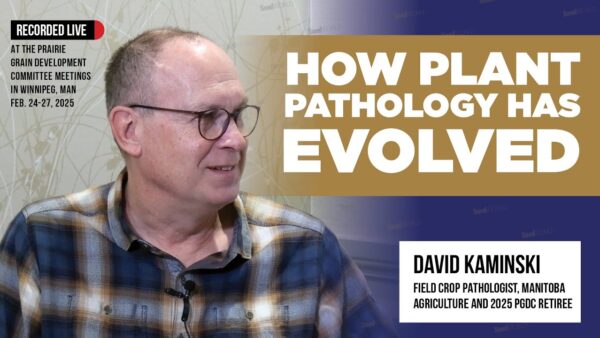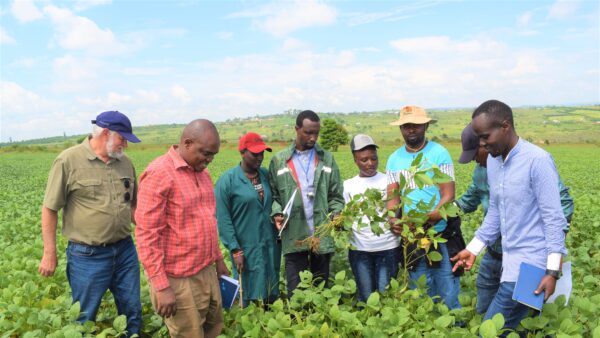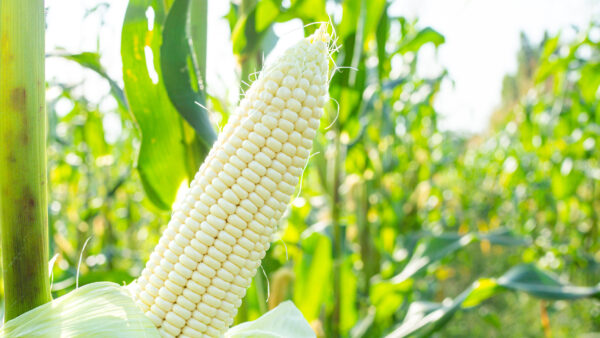Note: This is the third in a four-part series.
The 2014 movie Interstellar was a hit both at the box office and among critics, taking home a visual effects Oscar for its portrayal of Earth’s bleak future 40 years from now. Matthew McConaughey plays the lead role of a Colorado corn farmer struggling to survive as droughts and sandstorms have destroyed the planet’s ability to sustain a global population that years ago gave up on technology. He ends up burning his blighted crop. The only solution is, according to the film, to fly into outer space to find another planet to live on.
While a storyline about artificial intelligence (AI) wouldn’t provide the drama needed for a silver screen blockbuster, AI does promise to be a much more realistic solution to our current and future agricultural problems. Certainly it’s preferable to giving up on Earth and heading for the stars.
Today’s farmers embrace technology. They take advantage of weather stations and satellites, remote ground sensors and airborne drones. The enormous amount of data generated on the average farm grows year by year, and the management systems grow more powerful and the growing techniques become more precise.
The information revolution has created the wealth of data that makes true AI possible in agriculture, and tomorrow’s farmers will gladly embrace the necessary change in the way they do things. Why? Because farmers will immediately see the practical benefit of harnessing machine learning to be more effective and efficient in their use of resources.
Farmers aren’t the neo-Luddites portrayed by Interstellar. They want the cutting-edge data-backed technologies that can relieve them of the burdens that come from managing the fast-changing environment that is a modern farm. Farmers know their land better than anyone. They know the techniques that can make the most of their land, but they have to dedicate a substantial chunk of their time to planning ahead to get the job done right.
Each season, they have to work through a series of questions, perhaps with the assistance of seed advisors, third parties and various farm management software packages. Which crop to plant, when, what agronomic techniques should be used? What seed genetics will produce the best result in these conditions?
Those are complex, interrelated questions well-suited to the talents of artificial intelligence. AI algorithms are capable of running through all likely scenarios — within seconds — to judge based on the current conditions and available data the combination of choices likely to produce the best harvest. AI can come up with the answers and act on them.
While AI solutions aren’t yet mainstream in agriculture, pilot projects like Carnegie Mellon’s FieldView are exploring the possibilities. FieldView uses machine learning to discover the techniques that produce the greatest yields for the given environmental conditions. That’s the kind of innovation that will keep 2060 from ever coming near Hollywood’s sci-fi vision of a population incapable of feeding itself.
It’s far more likely that the farmer of 2060 will have a conversation with his AI assistant, whether through convenient device like a smartphone, or perhaps by talking to a full-size android. The conversation will be about how best to maximize returns in the upcoming season in light of the expected market conditions. The AI algorithm already has several decades’ worth of growing history for the field, down to the performance of each square foot of growing surface. It knows water levels, the farmer’s financial situation, and the latest commodity futures prices.
The farmer will depend on AI in much the same way we’ve come to depend on asking Google Maps or Waze to route us around an accident on the freeway and get us to our destination on time.
AI models outcomes for potential courses of action to recommend the paths that will work best. In agriculture, the AI system might automatically program the harvester with precisely timed instruction. It would could communicate to the fertilizing equipment the exact amount of nutrients required for maximum growth where and when they are needed. Most importantly, the system would optimize the farmer’s return on investment.
In this more realistic vision of the future, the farmer won’t need a spreadsheet or a calculator to figure out whether he should hedge against the possibility of a bad harvest. AI will minimize the chance that something will go wrong — even in the future there’s no predicting the weather. What the AI does is allow farmers to take full control of their land by identifying the most practical and effective solutions.
In this way, AI will become the single most important innovation in our time, not threatening the planet or farming, but saving it.












